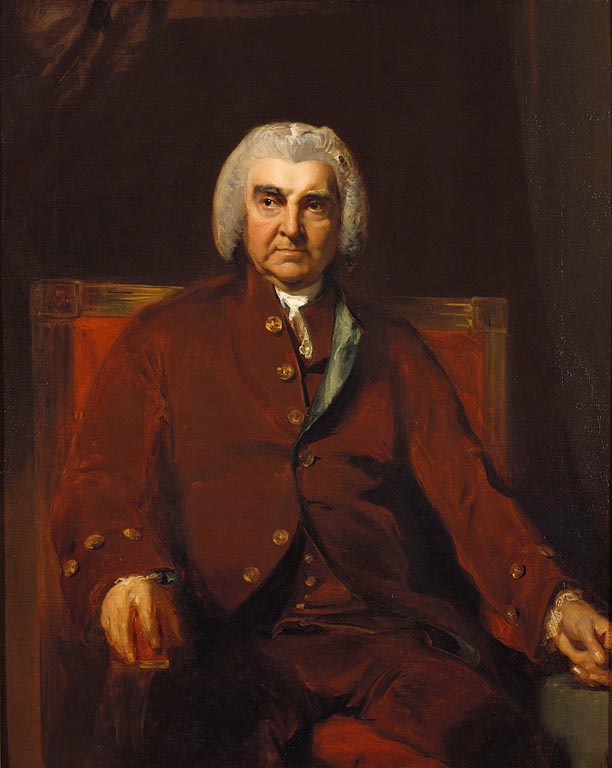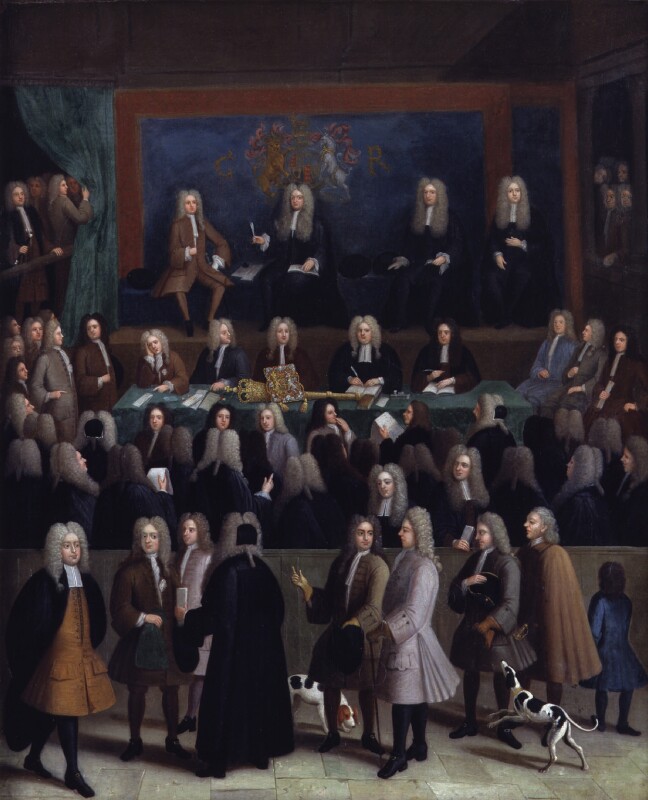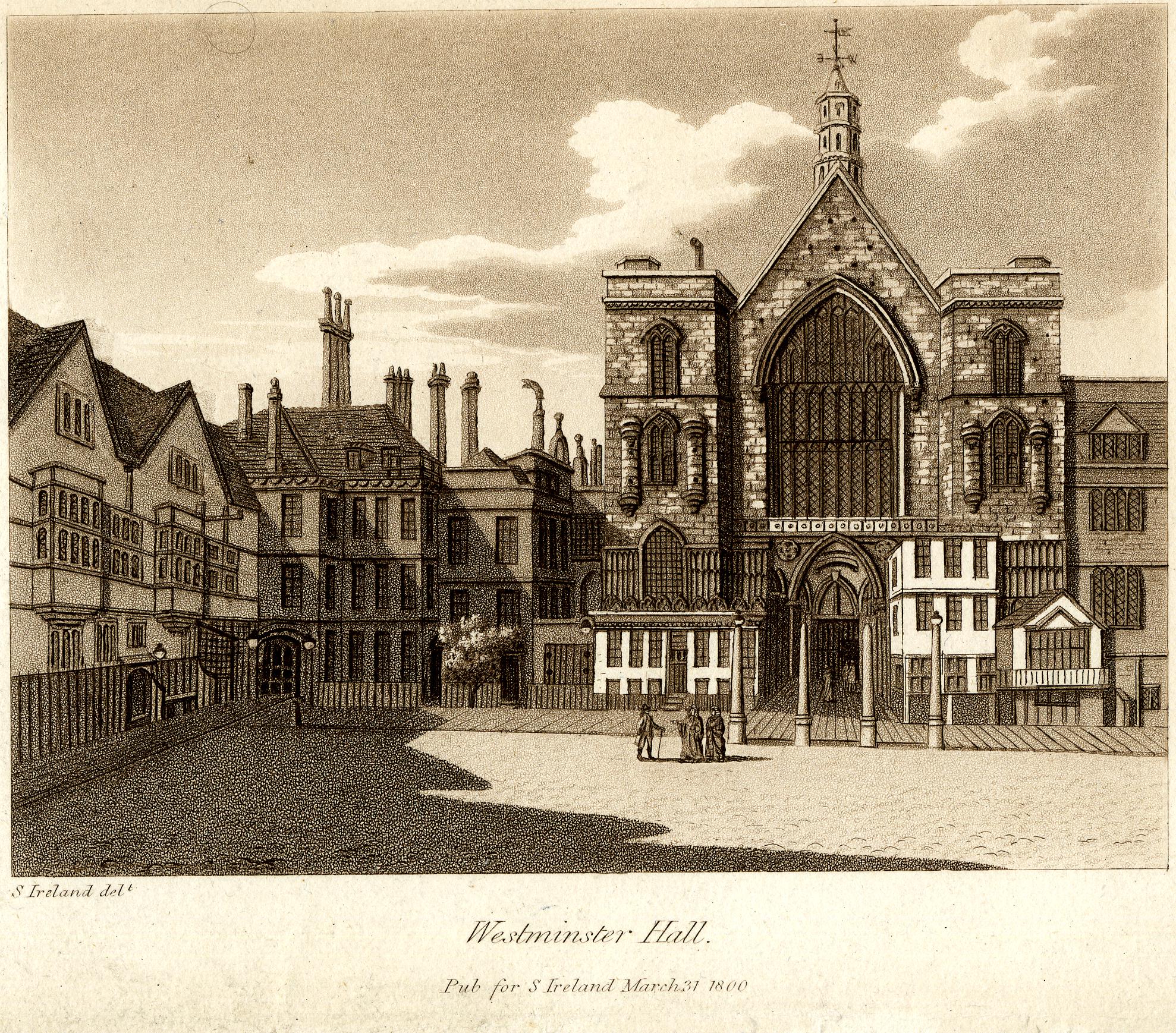 The Court of Chancery was the high-level English law court where the battle between Elizabeth Macie and Henrietta Maria Walker was resolved. Chancery was also such a legendary money-pit of bureaucratic red tape that Charles Dickens lampooned the court in his novel Bleak House, depicting centuries-long, fortune-destroying lawsuits that only mildly exaggerated the delays and expense that plagued litigants. The slow pace of Chancery may have contributed to the length of Macie v. Walker, but ultimately, the properties the sisters fought over were successfully divided between them after five years. Chancery was also the battleground for James Smithson’s bequest, where the United States, represented by Richard Rush, went in 1836 to stake their claim to Smithson’s fortune.
The Court of Chancery was the high-level English law court where the battle between Elizabeth Macie and Henrietta Maria Walker was resolved. Chancery was also such a legendary money-pit of bureaucratic red tape that Charles Dickens lampooned the court in his novel Bleak House, depicting centuries-long, fortune-destroying lawsuits that only mildly exaggerated the delays and expense that plagued litigants. The slow pace of Chancery may have contributed to the length of Macie v. Walker, but ultimately, the properties the sisters fought over were successfully divided between them after five years. Chancery was also the battleground for James Smithson’s bequest, where the United States, represented by Richard Rush, went in 1836 to stake their claim to Smithson’s fortune.
Chancery wasn’t always a court. It began as a royal administrative body, headed by the Lord Chancellor and a group of twelve Masters in Chancery. They began taking on legal cases to clear the backlog of petitions cluttering up the king’s council meetings.1 This change from administration to legal work was gradual at first, but by the early seventeenth century, the court had become an entirely judicial body. Chancery was increasingly staffed by professional lawyers, which coincided with a huge increase in cases.2 The Court of Chancery also played a role in the development of the English language: the quantity of paperwork created by Chancery helped set the spelling and grammar rules of an evolving language, as well as the visual appearance of English letters.3
 The legal jurisdiction of Chancery was unique. First, unlike common law courts, Chancery was able to apply what we now know as equity, a group of rulings or judgments intended to achieve the most fair or equitable outcome.4 Second, this power allowed the court power to enforce behavior—in the case of the Hungerford Deed, to require Walker to agree to the partition of lands—which no other courts of law could do in 18th-century England. Chancery’s orders required people to fulfill a promise or obey a judgment as closely as possible. Macie’s choice to sue her sister in Chancery was the only avenue she had to enforce the partition, despite the court’s reputation for being slow and costly.
The legal jurisdiction of Chancery was unique. First, unlike common law courts, Chancery was able to apply what we now know as equity, a group of rulings or judgments intended to achieve the most fair or equitable outcome.4 Second, this power allowed the court power to enforce behavior—in the case of the Hungerford Deed, to require Walker to agree to the partition of lands—which no other courts of law could do in 18th-century England. Chancery’s orders required people to fulfill a promise or obey a judgment as closely as possible. Macie’s choice to sue her sister in Chancery was the only avenue she had to enforce the partition, despite the court’s reputation for being slow and costly.
When Macie and Walker clashed in Chancery, the backlogged, sluggish, and expensive court that Dickens satirized had been firmly established for over 150 years (this could be part of the reason that Macie’s 1782 lawsuit, described in the Deed, languished for more than four years before judgment was passed). Chancery would essentially remain that way until it was dissolved in the 1870s. The Master of the Rolls, the senior Chancery Master, who was also the number-two judge of the court after the Lord Chancellor, decided Macie v. Walker in December 1786. Paperwork including the Deed, however, wasn’t completed until later the following year, in July 1787.
The Court of Chancery was also where the Smithsonian faced its first test. The bequest had to be navigated through Chancery’s expensive, tangled bureaucracy to secure the funds promised in Smithson’s will. Richard Rush, son of the Philadelphia doctor and Declaration of Independence signer Benjamin Rush, was dispatched to London in 1836 to see the case through. Rush was a natural choice, given his strong connections in London after having served as United States ambassador in England for the better part of a decade. Within an astonishingly quick two years, he successfully pushed the case through Chancery and had Smithson’s wealth converted into gold coin for transport back to the United States, paving the way for the establishment of the Smithsonian Institution.5
 If you needed to resolve a dispute like Macie v. Walker today, it wouldn’t be quite the same as what Smithson’s family or Rush experienced. After Chancery was dissolved in the 1870s, its jurisdiction over equity cases was merged into a new High Court of Justice that to this day oversees all types of legal matters. The Chancellor is no longer a judge, but instead supervises the court system of the United Kingdom, in which the Master of the Rolls is still a senior English judge.
If you needed to resolve a dispute like Macie v. Walker today, it wouldn’t be quite the same as what Smithson’s family or Rush experienced. After Chancery was dissolved in the 1870s, its jurisdiction over equity cases was merged into a new High Court of Justice that to this day oversees all types of legal matters. The Chancellor is no longer a judge, but instead supervises the court system of the United Kingdom, in which the Master of the Rolls is still a senior English judge.
Footnotes
1 P. Tucker, “The Early History of the Court of Chancery: A Comparative Study,” The English Historical Review 115, no. 463 (2000): 799–800. Back to text
2 Timothy S. Haskett, “The Medieval English Court of Chancery,” Law and History Review 14, no. 2 (1996): 269, 278–279; Tucker, “The Early History of the Court of Chancery,” 796. Back to text
3 Malcolm Richardson, “Henry V, the English Chancery, and Chancery English,” Speculum 55, no. 4 (1980): 739. Back to text
4 Haskett, “The Medieval English Court of Chancery,” 254. Back to text
5 Heather Ewing, The Lost World of James Smithson: Science, Revolution, and the Birth of the Smithsonian (New York: Bloomsbury, 2007), 319–325. Back to text
